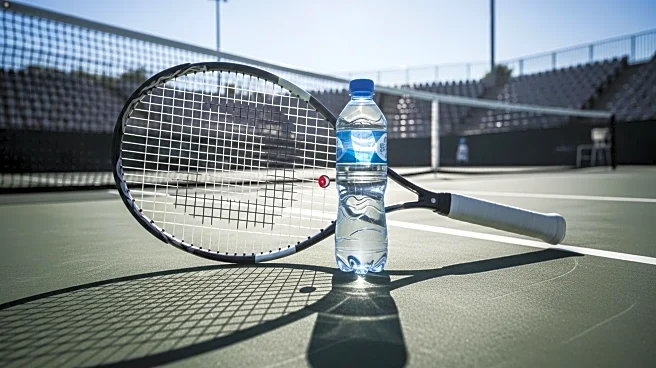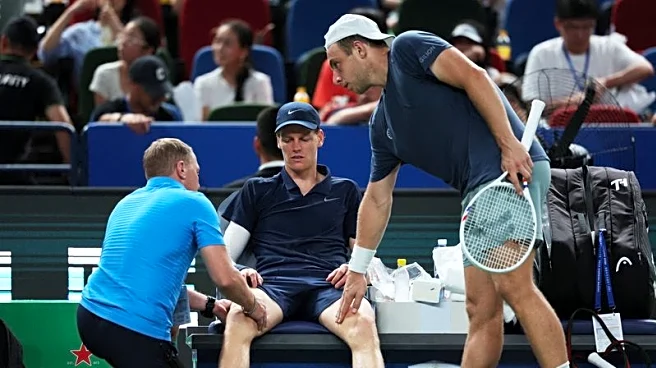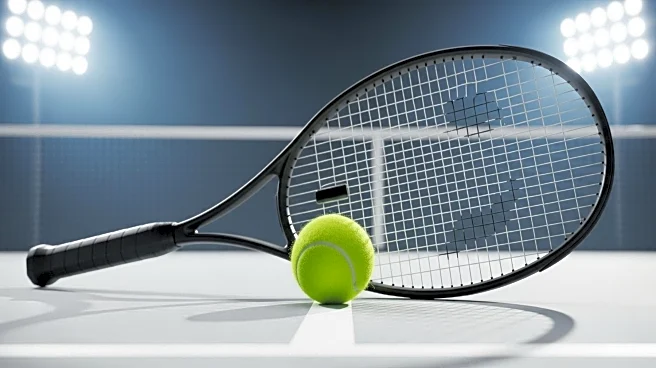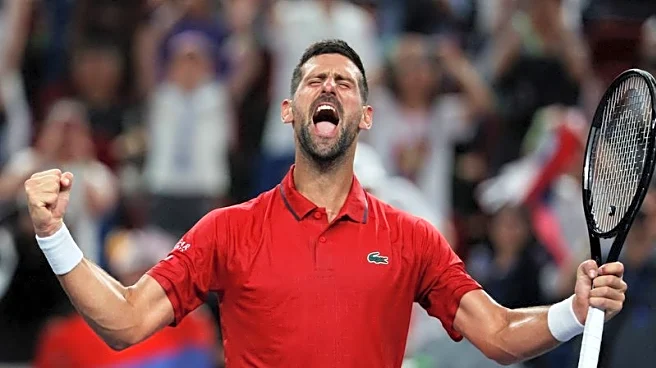What is the story about?
What's Happening?
The ATP is under scrutiny for its handling of extreme heat conditions during tennis tournaments, as players face significant challenges due to high temperatures. At the Shanghai Masters, several players, including Jannik Sinner, Novak Djokovic, and Holger Rune, have struggled with the oppressive heat, leading to retirements and health concerns. The ATP currently lacks a standardized heat policy, relying instead on on-site supervisors and medical teams to manage conditions. This has led to criticism from players and calls for a formal policy to ensure player safety. The issue is compounded by the long tennis season, which has seen numerous retirements and injuries, raising concerns about player welfare.
Why It's Important?
The lack of a standardized heat policy in tennis highlights broader issues of player welfare and safety in professional sports. As global temperatures rise, extreme weather conditions are becoming more common, posing risks to athletes' health and performance. The ATP's current approach, which leaves decisions to on-site supervisors, may not adequately protect players, leading to potential health risks and impacting the integrity of competitions. The situation underscores the need for sports organizations to adapt to changing environmental conditions and prioritize athlete safety. Failure to address these issues could lead to increased health problems for players and affect the sport's reputation.
What's Next?
The ATP has stated that it is actively reviewing its approach to extreme heat conditions and is considering implementing an official heat policy. This review involves consultations with players, tournaments, and medical experts to develop measures that better protect player health during competition. The governing bodies of tennis, including the ATP, WTA, and ITF, may need to collaborate to establish a unified policy across all tournaments. Additionally, there may be discussions about adjusting the tennis calendar to avoid peak heat periods, ensuring safer conditions for players. These steps are crucial to prevent further health issues and maintain the sport's credibility.
Beyond the Headlines
The challenges faced by tennis players in extreme heat conditions reflect broader environmental and health concerns. As climate change leads to more frequent and severe heatwaves, sports organizations must consider the long-term implications for athlete safety and competition scheduling. The situation also raises ethical questions about the responsibility of sports governing bodies to protect players and prioritize their well-being over commercial interests. Addressing these issues may require significant changes in how sports are organized and conducted, with a focus on sustainability and health.
AI Generated Content
Do you find this article useful?














